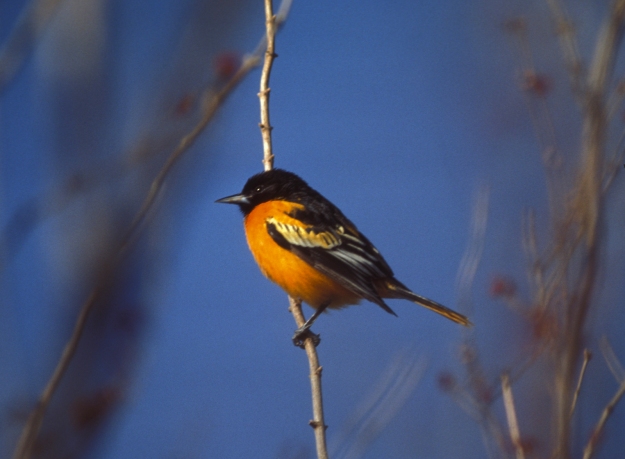
Photo by makamuki0/Pixabay.com • The turtledove has featured prominently in poems and other literature, including the holiday song “The 12 Days of Christmas.”
With May’s arrival, other migrating birds have made stops in my yard, providing some excitement to the daily routine. It’s easy to wax poetic about the birds around us. Indeed, poets have been incorporating birds into some of their best-known work for centuries.
The Bard himself penned a poem titled “The Phoenix and the Turtle.” While the phoenix is a mythical bird and not one actually found in nature, the “turtle” in the poem’s title refers to the well-known European turtledove. Even before Shakespeare glorified the turtledove in his poetry, this small dove had already been entangled with myth and legend stretching back to Ancient Greece and Rome. For instance, the turtledove was considered by the Greeks as sacred to Demeter, the goddess of the harvest. Romans adopted the turtledove as an emblem of their goddess Fides, who reigned over the attributes of trust and faith. Perhaps, even more famously, the turtledove is still known today in the lyrics of the enduring Christmas carol, “The 12 Days of Christmas,” as the gift given on the second day of Christmas.

Photo by skylarvision/Pixabay.com • The phoenix was a legendary bird that, if destroyed, arose from its own ashes to live again.
Samuel Taylor Coleridge gave us his gloomy “The Rime of the Ancient Mariner” in 1798. The longest of his poems, it tells of a sailor who brings ill fortune upon himself by shooting an albatross, which is a family of sea-going birds consisting of about two dozen species. The poem also inspired the phrase “having an albatross around one’s neck” as a metaphor for bad luck.
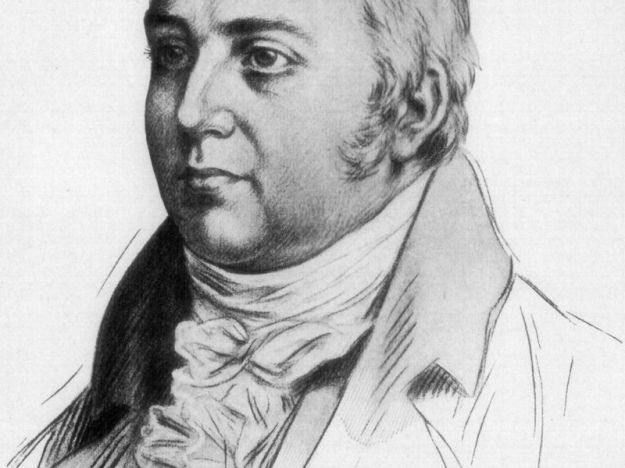
The poet Samuel Taylor Coleridge popularized the phrase “albatross around one’s neck” to suggest a period of ill fortune in his poem “The Rime of the Ancient Mariner.”
Albatrosses are large birds with wingspans larger than most other birds, making them capable of spending almost their entire lives at sea except for the times they come ashore for the purpose of nesting. The entire family has been besieged by a variety of problems, many of which are caused by humans. Three albatross species are critically endangered, five species are endangered, seven species are near threatened and seven species are considered vulnerable.
One of America’s most famous poets often looked to the natural world, especially its feathered inhabitants, for inspiration for some of her most famous poetry. “Hope is the Thing with Feathers” by Emily Dickinson is arguably one of the finest metaphors in American poetry, with the abstract concept of hope being equated with a bird Dickinson likely observed in her gardens in Amherst, Massachusetts.

The poet Emily Dickinson’s perceptive observations of the natural world show in her poetry.
I’ve always enjoyed Dickinson’s “A Bird Came Down the Walk,” which transforms an ordinary encounter between a bird and a woman tossing it a crumb into an inspiring message of perseverance. One cannot help but feel that Dickinson, a famously reclusive woman, also envied the bird its power of flight and the freedom its wings gave it.
A near contemporary of Dickinson, and one famous for his moody, rhythmical works, Edgar Allan Poe published his masterpiece “The Raven” in 1845. While the poem won him many fans, he received a paltry $9 from the magazine “The American Review” for the work. Perhaps because of the insulting matter of compensation, Poe first allowed the work to be published under a pseudonym. “The New York Evening Mirror” became the first outlet to publish the poem with Poe’s name attached to it.

Edgar Allan Poe
The young poet Percy Bysshe Shelley wrote a classic poem titled “To a Skylark” in 1820. Shelley, one of the English Romantic poets, has been overshadowed in some ways by his wife, the novelist Mary Shelley, who provided the world with the enduring novel Frankenstein. Shelley apparently wrote his poem after he and his wife encountered one of these birds during a stroll in the countryside during a trip to Italy.
As is the case with good literature, Shelley’s poem inspired other authors. Reportedly, the English playwright Noël Coward and the American novelist F. Scott Fitzgerald received inspiration from lines in the poem to create titles for their respective works, “Blithe Spirit” and “Tender is the Night.” American playwright Tennessee Williams titled his first play “Not About Nightingales,” apparently as a reaction to Shelley’s ode.

Although his wife arguably achieved more fame with her novel, Frankenstein, Percy Bysshe Shelley won immortality with his memorable poems in the spirit of English Romanticism.
The Eurasian skylark is a widespread species found across Europe and Asia. This bird has also been introduced in various locations around the world. In North America, introduced populations of skylarks are found on southern Vancouver Island in British Columbia and San Juan Island in the state of Washington.
The only native lark in North America is the horned lark, also known by its scientific name of Alauda alpestris, which translated means “lark of the mountains.” The horned lark is a common, widespread bird of open country, such as prairies, deserts, and agricultural lands. Although horned larks also sing in flight like their relative, only the Eurasian skylark seems to be famous enough for its song to inspire poets to write tributes. The Eastern meadowlark, a fairly common bird in the region, is not an actual lark but a member of the blackbird family.
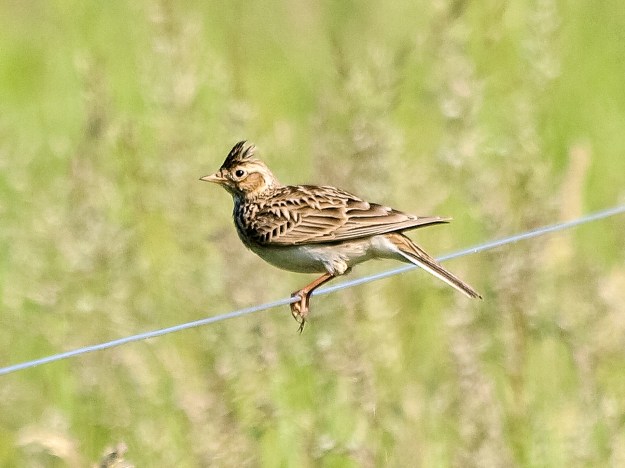
Photo by Kathy2408/Pixabay.com • A Eurasian skylark perches on a wire. This bird once inspired the poet Percy Bysshe Shelley to write his famous poem “To a Skylark.”
Based on the opening lines to Shelley’s poem, it can be safely argued that Shelley was particularly impressed by the skylark’s song.
“Hail to thee, blithe spirit!
Bird thou never wert,
That from heaven, or near it,
Pourest thy full heart
In profuse strains of unpremeditated art.”
Birds are continually inspiring us, much like a singing skylark once served as an avian muse for one of Shelley’s most famous poems. Whether it is their song, their beauty, or their free spirits, birds are certainly worthy of a poem or two.

“Hope” is the thing with feathers – That perches in the soul – And sings the tune without the words – And never stops – at all – And sweetest – in the Gale – is heard – And sore must be the storm – That could abash the little Bird That kept so many warm – I’ve heard it in the chillest land – And on the strangest Sea – Yet – never – in Extremity, It asked a crumb – of me. — by Emily Dickinson


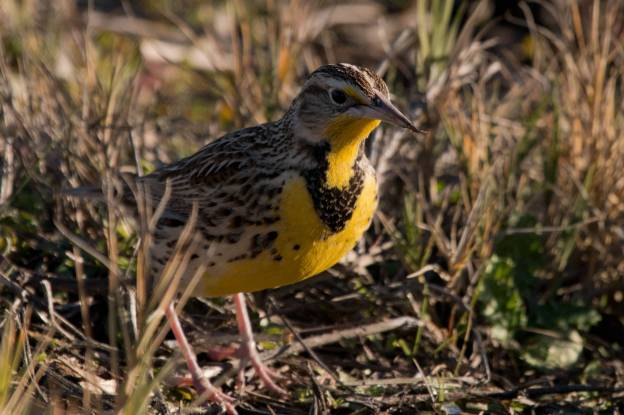
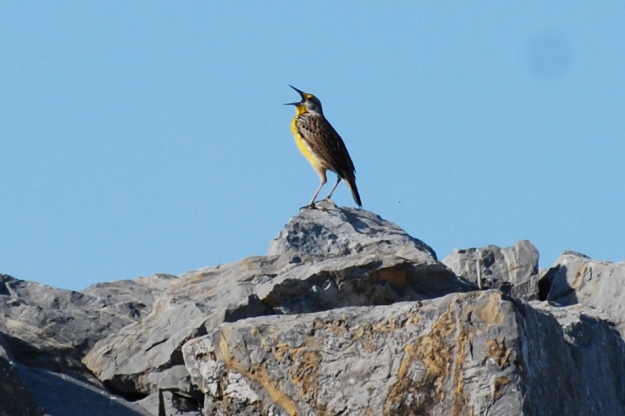 Photo by Jean Potter • A rocky outcrop provides a perch for this singing male Eastern meadowlark.
Photo by Jean Potter • A rocky outcrop provides a perch for this singing male Eastern meadowlark.